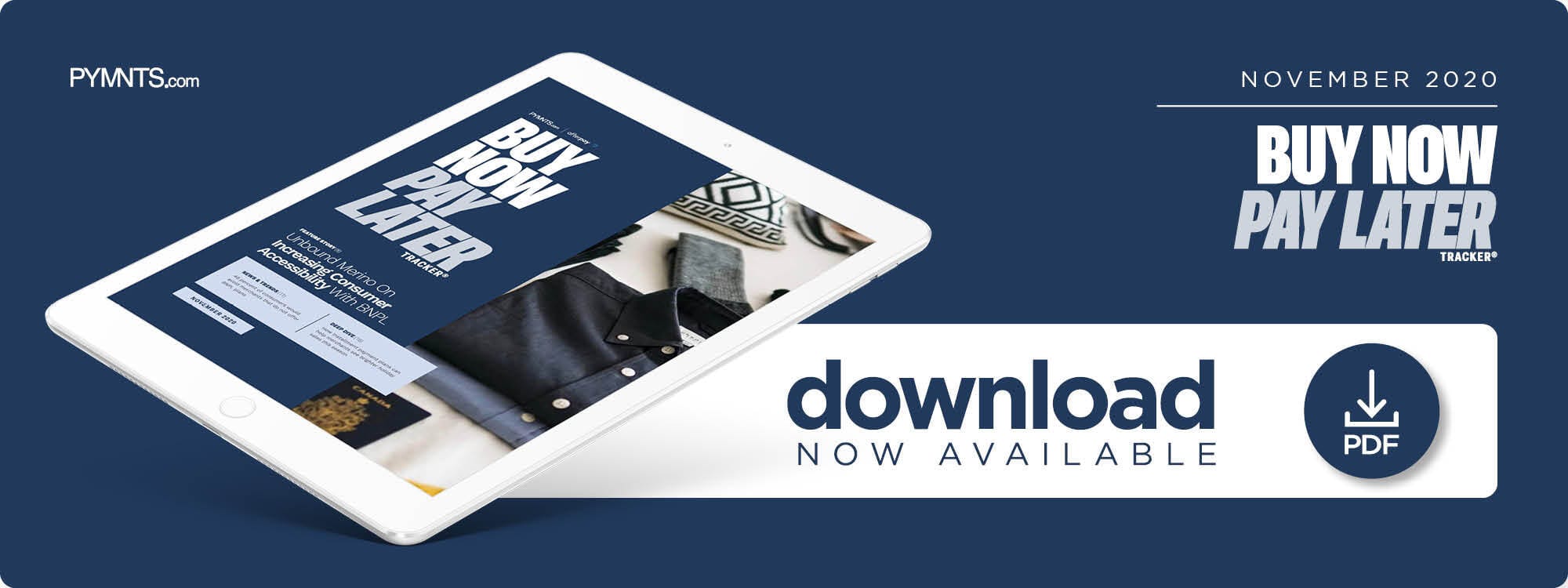Deep Dive: Why BNPL Could Be Key To Boosting Consumers’ Purchasing Power This Holiday Season

A strained holiday shopping season is upon us, with many consumers still struggling financially as the pandemic grips the nation. The unprecedented health crisis is prompting customers to turn to flexible, contactless payment methods to make purchases online and in stores, and installment payment plans are emerging as particularly enticing options.
These buy now, pay later (BNPL) solutions enable shoppers to buy merchandise and pay for it in several installments, which are typically interest-free as long as payment deadlines are met. They also differ from credit cards in that they allow consumers to avoid double-digit interest rates and fees while still giving them more control over their finances and enabling them to make purchases they might otherwise be unable to afford.
Recent PYMNTS research shows that millennials are especially enthusiastic about these payment options. These consumers, born between 1981 and 1996, are the most highly educated group in U.S. history and comprise the largest share of the workforce. Many have still been hard-pressed to establish themselves financially, however, and they tend to be wary of tapping into traditional credit-based lending products. These factors have led them to favor BNPL options for everything from small, everyday purchases to big-ticket items.
This month’s Deep Dive focuses on the rise of BNPL plans during the 2020 holiday season as consumers seek more flexibility amid pandemic-driven economic hardships. It also examines how these installment payment plans can be crucial to giving millennials a boost.
Tapping Into BNPL During The Holidays
Installment payment plans have witnessed a meteoric rise in usage over the past several years, with consumers around the globe expected to spend $680 billion via such solutions by 2025. This figure was just $353 billion last year, marking a 92 percent hike. One recent report found that eCommerce marketplaces will represent a focal point for alternative ways to finance merchandise in North America and Europe and that BNPL options will be especially appealing to millennial and Generation Z consumers.
BNPL usage is poised to increase even more during the holiday shopping season as consumers look for more ways to make gift purchases. Installment payment plans can offer many of the benefits of instant microloans at the point of sale without making it necessary for consumers to provide documentation or fill out applications. These digital methods also offer the contactless ease and convenience consumers have come to expect during the pandemic, especially as many intend to forgo or alter their brick-and-mortar shopping experiences.
Retailers are also seeing the benefits in turning to BNPL options to entice budget-conscious consumers during the holiday season. Gap recently announced a partnership with installment payment solution provider Afterpay, which will allow customers shopping at Athleta, Banana Republic, Gap and Old Navy to leverage BNPL options for their online purchases. Such moves can help merchants reach customers who are looking for flexible spending alternatives for gifts and even for everyday purchases — a group of consumers that includes many millennials.
BNPL’s Millennial Appeal
Millennials are in a unique position compared to consumers from other generations. Recent PYMNTS research finds that only 20.7 percent of millennials report being financially stable, compared to 79 percent of non-millennial consumers. Millennials also tend to have less money stashed away than their non-millennial counterparts, with 41.3 percent saying they have less than $2,500 in savings. Just 23.5 percent of baby boomers and seniors say the same. Other research has revealed that millennials’ struggles with money management and financial stress began well before the COVID-19 pandemic’s onset. One survey found that college graduates between the ages of 23 and 38 are often saddled with student loan debt, have expensive purchasing habits and lack savings skills, for example. These behaviors could explain why many millennials are wary of turning to traditional credit products for their purchases.
The tricky financial situations millennials often face do not negate the fact that many still seek lending tools to help them purchase essential and big-ticket items. PYMNTS research shows that millennials prefer BNPL purchase options much more than other generations. Twenty-seven percent of millennials report using installment payment plans to make purchases online, compared to just 13 percent of their non-millennial counterparts who said the same.
Millennials also tend to make the biggest purchases online, according to a separate study. It found that consumers from this generation accounted for 50 percent of BNPL users over the past two years, with 18 percent of all millennials having made at least one purchase using the method during the same time frame. This compared to just 9 percent of Generation X consumers who said the same.
Millennials are tapping BNPL payment methods for more than just big purchases, too. PYMNTS research shows that 21 percent of millennials prefer to shop for clothing and 19 percent spend money on electronics while older generations spend nearly 15 percent on groceries and home furnishings. This means BNPL could be especially useful in helping millennials buy gifts and extend their purchasing power by breaking the payments into installments.
The 2020 holiday season will be like none other in recent memory as consumers shift many of their shopping habits online and look for ways to make their limited in-store experiences as swift and contactless as possible. Giving these consumers — especially younger consumers — the BNPL payment tools they need to flexibly accommodate their purchases and better handle their finances could be key to winning their business now and in the future.
